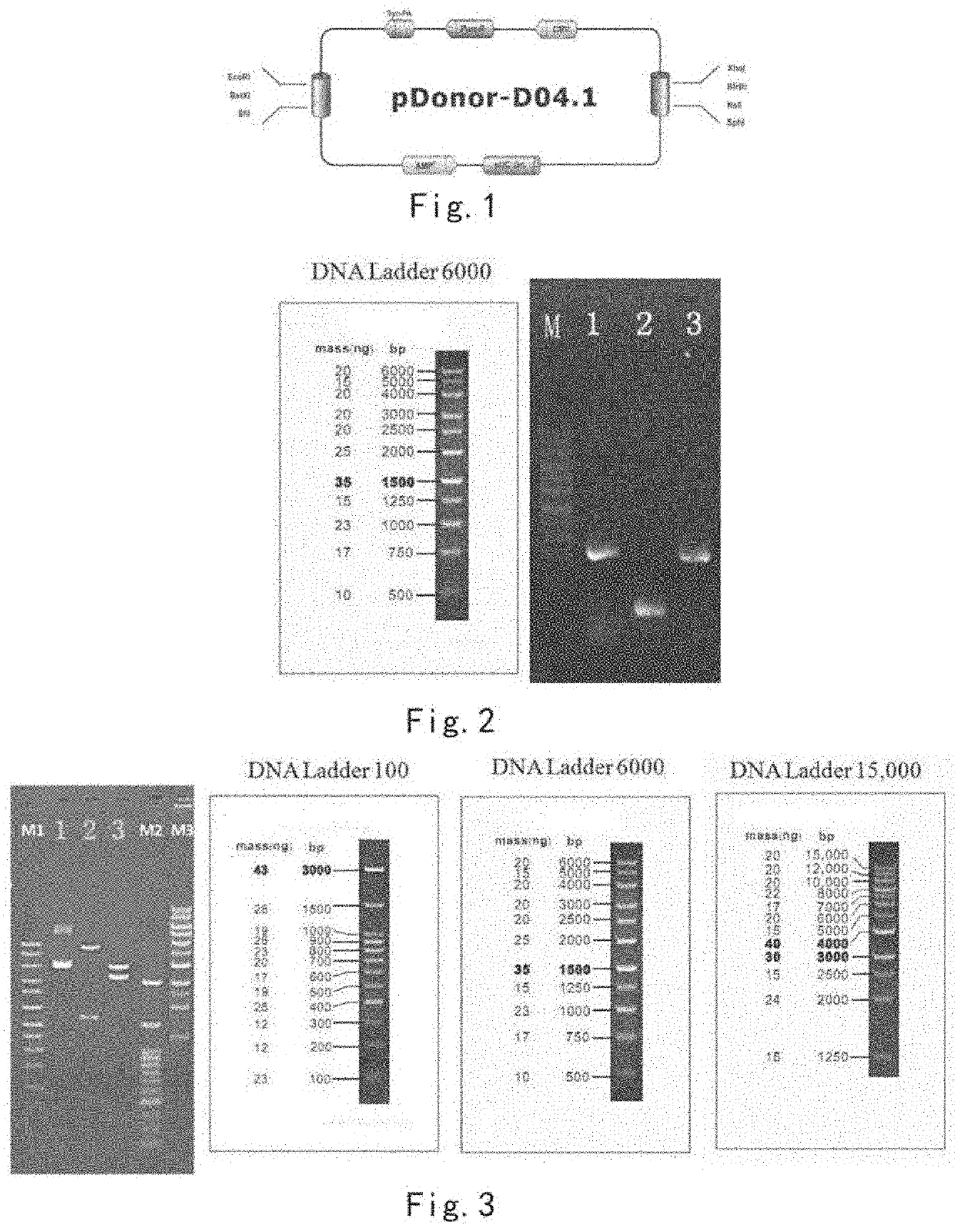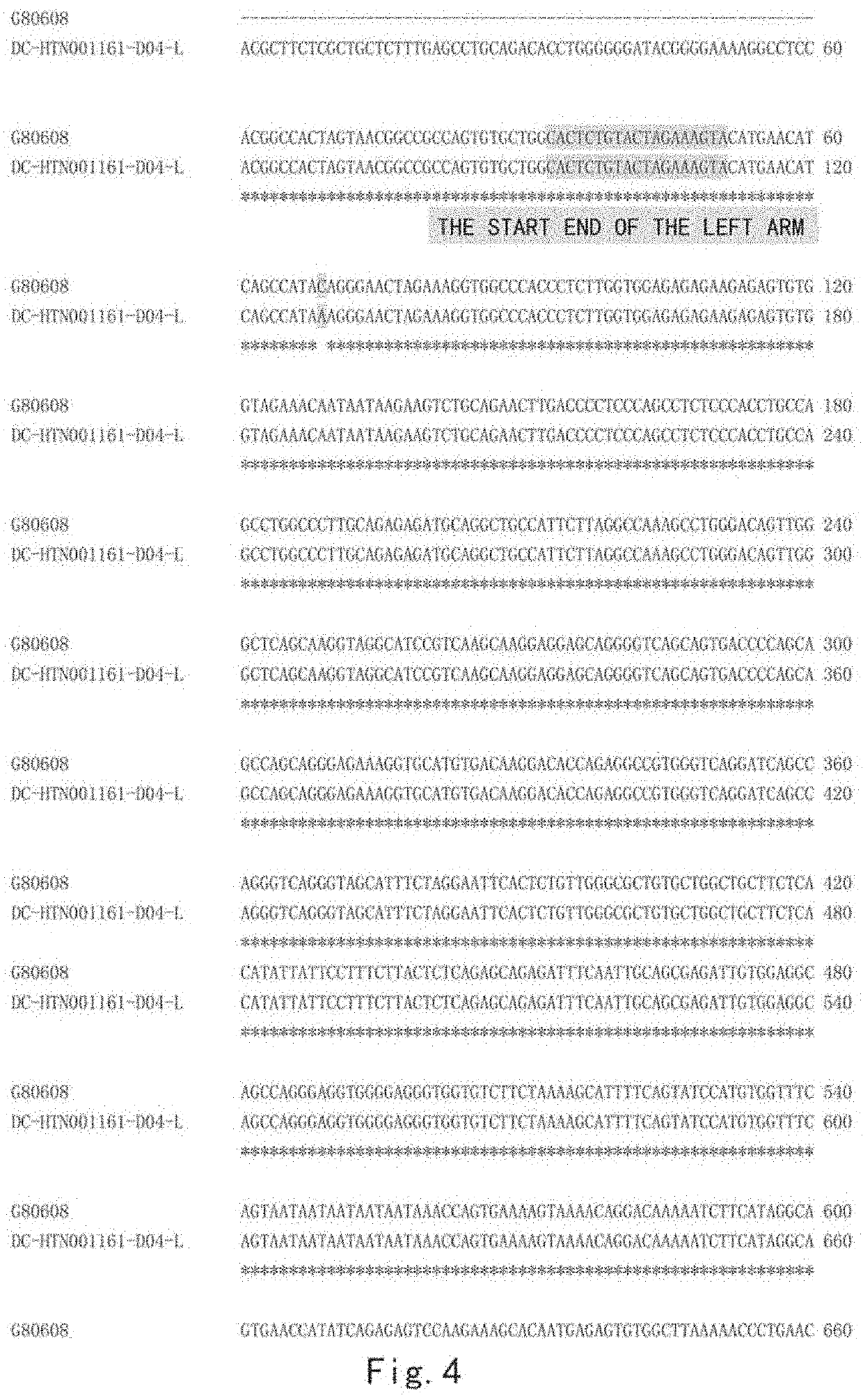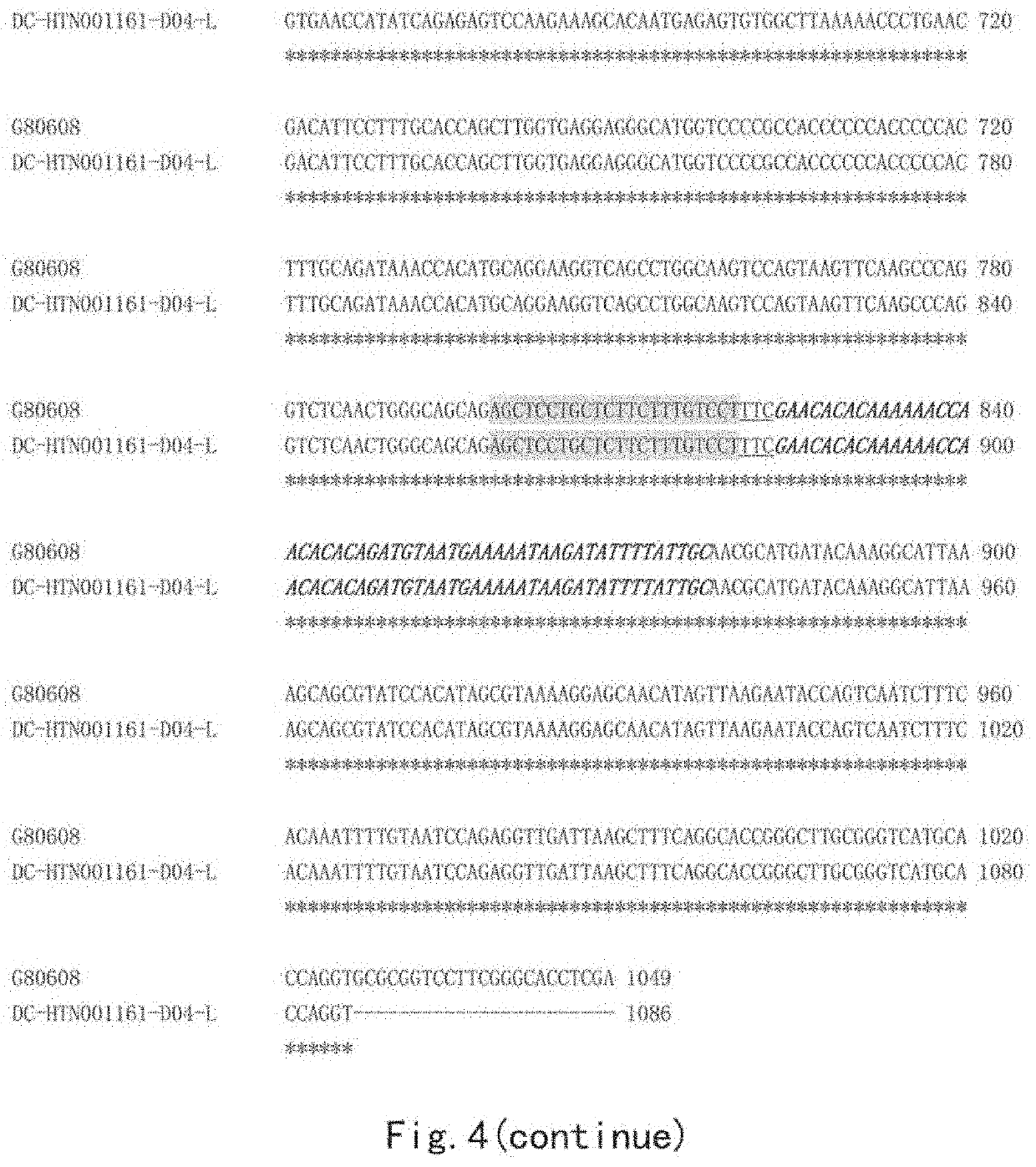DNA reference standard and use thereof
a reference standard and dna technology, applied in the field of cell biology technology, can solve the problems of inefficient barcode linkage process, limited, uneven amplification, etc., and achieve the effect of improving the accuracy of pcr amplification
- Summary
- Abstract
- Description
- Claims
- Application Information
AI Technical Summary
Benefits of technology
Problems solved by technology
Method used
Image
Examples
example 1
ion of a Cell Strain Carrying a Marker Able to be Spiked into a Sample to be Detected and an EGFR L858R Mutation
[0136]Experimental Instruments and Reagents
[0137]DNA Polymerase (GeneCopoeia, C0103A); Primer Oligo (Invitrogen); Donor cloning vector pDonor-D04.1 (GeneCopoeia); T4 DNA Ligase (GeneCopoeia, A0101A); Fast-Fusion™ Cloning Kit (GeneCopoeia, FFPC-C020); Gel Extraction Kit (Omega); 2T1 competent cell (GeneCopoeia, U0104A); STBL3 competent cell (GeneCopoeia, U0103A); restriction enzyme (Fermentas); DNA Ladder(GeneCopoeia); E.Z.N.A.® Gel Extraction Kit (OMEGA); UltraPF™ DNA Polymerase Kit(GeneCopoeia, C0103A); E.Z.N.A.® Plasmid Mini Kit I (OMEGA); Endotoxin-free Plasmid mini / Mid Kit (Omega); PCR instrument(Takara).
[0138]A. Construction of a Donor Clone that Carries a Marker Able to be Spiked into a Sample to be Detected and an EGFR L858R Mutation;
[0139]A1. Design of the Vector
[0140]1. The Backbone of the Vector is Shown in FIG. 1.
[0141]2. Information of the Donor Clone
[0142]Firs...
example 2
n and Purification of Genomic DNA (gDNA) of the Positive
[0219]Monoclonal Cell Strain
[0220]1. Extraction of gDNA
[0221]The gDNA of the positive monoclonal cells was extracted and purified according to the instructions of QIAamp DNA Blood Mini Kit (Qiagen, 51104). Finally, according to the requirement of extracting the genome of the cell, the gDNA was eluted with a volume of 200 μL of Tris-EDTA (10 mM Tris-HCl, 1 mM EDTA, pH 8.1) and added to a 1.5 mL centrifuge tube for use.
TABLE 8Result of gDNA extractiongDNA concen-gDNA260 / 260 / gDNACell typetration(ng / μL)volume(μL)280230yield (ug)Positive300.41001.902.1730.04monoclonalcell
example 3
tion of the Molecule Number of a Mutant Gene in Standard Cells by ddPCR
[0222]ddPCR currently is generally accepted as the best method for determining the DNA molecule number. ddPCR was used in this example to determine the mutant gene molecule numbers of the two genomic standard DNAs of EGFR L858R (homozygous) (hereinafter referred to as: EGFR L858R) of HCT 116 cells and BRAF V600E (homozygous) (hereinafter referred to as: BRAF V600E) of HCT 116 cells derived from the homozygous standard cell strains.
[0223]ddPCR Detection for the Molecule Number of a Mutant Gene in a Standard Cell Strain
[0224]1. Design the Primers of EGFR L858R and BRAF V600E
[0225]According to different gene-mutant gDNA standards, Taqman probes and corresponding upstream and downstream primers were designed at the position of base mutation in each standard, as shown in Table 9.
TABLE 9design of the primers of EGFR L858R and BRAF V600EPrimer namePrimer sequencePrimer F5′-GCAGCATGTCAAGATCACAGATT-3′(L858R)(SEQ ID NO: 33...
PUM
| Property | Measurement | Unit |
|---|---|---|
| temperature | aaaaa | aaaaa |
| temperature | aaaaa | aaaaa |
| concentration | aaaaa | aaaaa |
Abstract
Description
Claims
Application Information
 Login to View More
Login to View More - R&D
- Intellectual Property
- Life Sciences
- Materials
- Tech Scout
- Unparalleled Data Quality
- Higher Quality Content
- 60% Fewer Hallucinations
Browse by: Latest US Patents, China's latest patents, Technical Efficacy Thesaurus, Application Domain, Technology Topic, Popular Technical Reports.
© 2025 PatSnap. All rights reserved.Legal|Privacy policy|Modern Slavery Act Transparency Statement|Sitemap|About US| Contact US: help@patsnap.com



